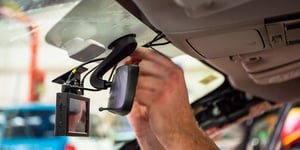Some providers offer telematics solutions you can install yourself – here’s why that isn’t the best option
Expertise is the currency of business. It’s a big reason your customers come to you – to do things they don’t have the knowledge and experience to efficiently do themselves. It’s why they pay you – and, in turn, it’s what keeps you in business.
But whatever industry your business is in – transportation, service, construction – one area in which you most likely don’t have expertise is installing telematic solutions. Yet, many solutions providers – especially those that sell solutions through online retailers – expect their customers to do just that.
And oftentimes the result is an unsuccessful installation plagued by problems that a professional installer could have addressed and solved. For this reason, it’s not surprising that a large number of companies that switch providers self-installed the system they sought to replace.
Specifically, there are at least four ways a do-it-yourself installation can go horribly wrong.
 1. Your vehicles or assets are outfitted with the wrong telematics devices. Installers who are knowledgeable about the ins and outs of the telematics solution will know which devices are right for each type of vehicle or asset. Good installers also will recognize and address any needed modifications to meet your specific needs, such as when installing devices on different makes and models of commercial trucks or outfitting yellow iron with devices that can stand up to the heavy-duty demands of a construction site.
1. Your vehicles or assets are outfitted with the wrong telematics devices. Installers who are knowledgeable about the ins and outs of the telematics solution will know which devices are right for each type of vehicle or asset. Good installers also will recognize and address any needed modifications to meet your specific needs, such as when installing devices on different makes and models of commercial trucks or outfitting yellow iron with devices that can stand up to the heavy-duty demands of a construction site.
2. The system doesn’t work like it should. Getting all devices connected to the platform is one of the greatest points of frustration when self-installing a telematics solution. In addition to having dedicated professional installers who can ensure all devices are connected and working as they should, some providers even give installers access to a tool inside the telematics app that confirms connectivity and/or identifies issues that need to be addressed during the process.
3. There’s a lack of clarity about how to troubleshoot and solve installation-related problems. When doing a self-installation, who can you call if you run into problems or have questions? You might be instructed to contact the provider’s customer service team, but there’s no guarantee the person who answers your call, email, or online chat inquiry will have the knowledge to help you.
A telematics solutions provider that can handle your installation also is likely to stand behind their installation with customer support to promptly resolves issues, answer questions, and ensure your satisfaction.
4. Costs of a poor installation outweigh any money saved. Admittedly, buying a system online an installing it yourself can often be a cheaper option. But the cost-savings can be overshadowed by the problems described above and other “costs” such as installation-related equipment downtime, time spent resolving issues, and delays in getting access to the fleet data you need – your reason for investing in the telematics solution in the first place.
When Good Enough Just Isn’t Good at All
If you are considering investing in a relatively inexpensive telematics solution that requires you to do the installation yourself, you should probably ask yourself, “Where else might the provider be cutting corners?”
While a cheaper solution might appear to be good enough to meet your needs, remember, there’s also the possibility that the system instead just isn’t very good at all.

